Introduction to Chicken Butchery
Chicken butchering, a fundamental skill in culinary arts and home cooking, has a long history, evolving from simple methods to more refined techniques. Early civilizations utilized basic tools to process poultry, often for immediate consumption or preservation. Modern methods, influenced by advancements in knife design and hygiene practices, prioritize efficiency and safety.
Proper safety procedures are paramount during chicken butchering. Contamination can easily occur if hygiene practices are neglected. This section emphasizes the importance of maintaining a clean workspace, using sanitized tools, and practicing proper hand washing techniques to avoid cross-contamination and potential health risks. Thorough cleaning and disinfection of surfaces and equipment are crucial steps to ensure food safety.
Essential Tools and Equipment
A well-equipped butchering station is essential for a safe and efficient process. Essential tools include a sharp knife, cutting board, and a reliable source of running water for rinsing. A sturdy work surface is crucial to maintain stability and prevent accidents. Additional equipment like a pair of tongs or a meat mallet can be beneficial for certain tasks, but the fundamental tools are the foundation for safe and efficient work.
Types of Knives and Their Uses
The right knife for the job is crucial for precise cuts and a satisfying result. Different knives are designed for specific tasks in chicken butchering. A robust selection of knives, each with a unique function, will greatly improve efficiency.
| Knife Type | Description | Typical Uses in Chicken Butchery |
|---|---|---|
| Serrated Utility Knife | Features a serrated blade for cutting through tough skin and cartilage. | Useful for removing skin, cutting through joints, and trimming excess fat. |
| Boning Knife | A flexible, slender blade designed for separating meat from bone. | Ideal for separating meat from the backbone and removing individual pieces of meat from the carcass. |
| Paring Knife | Small, sharp blade for detailed work. | Perfect for trimming excess fat, skinning, and removing small bones. |
| Chef’s Knife | Large, versatile blade for a variety of tasks. | Can be used for initial cuts, chopping, and portioning of the chicken. |
Preparing the Chicken
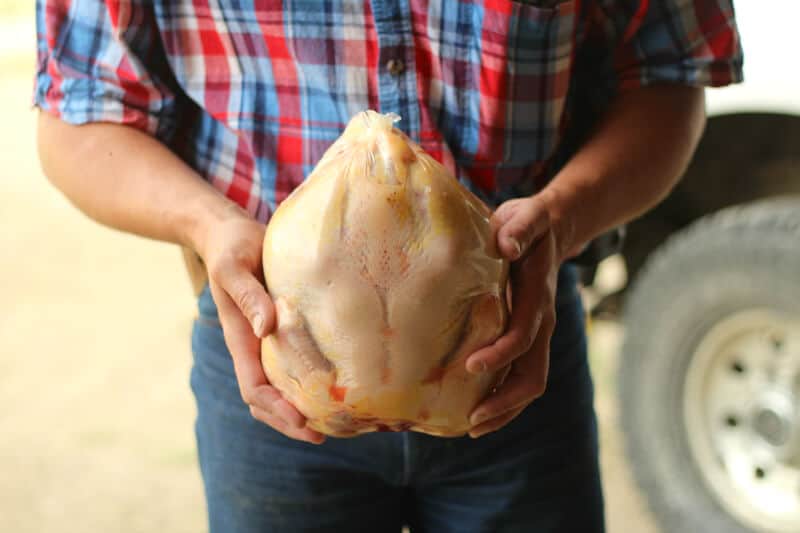
Proper preparation is crucial for a successful chicken butchering experience. This involves cleaning the chicken thoroughly, removing the giblets, and ensuring the bird is ready for the next steps. Proper thawing techniques and understanding the anatomy of the chicken are also essential.
Thorough preparation of the chicken minimizes contamination risk and ensures optimal results during the butchering process. A clean and properly handled chicken will produce more flavorful and safer results.
Cleaning and Preparation
Proper cleaning of the chicken is essential for hygiene and minimizing the risk of bacterial contamination. Carefully rinse the chicken under cold running water. Pay particular attention to the cavity and any visible areas that may have accumulated debris. This initial cleaning step sets the stage for a more hygienic butchering process.
Removing Giblets and Organs
Removing the giblets and other internal organs is a critical step in the butchering process. These organs can introduce undesirable flavors and potential contamination if left inside. Locate and carefully remove the giblets, heart, liver, and any other organs from the cavity. Discard these parts properly.
Thawing Methods
Frozen chickens must be thawed safely and effectively to prevent bacterial growth. Improper thawing can result in a contaminated bird. Several methods can be used for thawing:
- Refrigerator Thawing: Place the frozen chicken in the refrigerator. This is the safest method, allowing the chicken to thaw slowly and evenly. The thawing time depends on the size of the chicken. For example, a whole chicken might take 24-48 hours to thaw in a standard refrigerator. Always use a sealed container to contain any potential liquid that may be released during the thawing process.
- Cold Water Thawing: Submerge the frozen chicken in a sealed plastic bag in cold running water. Change the water every 30 minutes to maintain optimal temperatures. This method is quicker than refrigerator thawing, but still requires careful monitoring to prevent contamination. For instance, a 3-pound chicken might thaw in 1-2 hours in cold water.
Separating Skin from Meat
Proper separation of the skin from the meat is crucial for both visual appeal and the ease of subsequent processing. Using a sharp knife, carefully score the skin along the breastbone. This allows you to lift the skin away from the meat in a more controlled manner. Then, using a steady hand and your knife, peel the skin away from the meat, ensuring no meat remains attached.
Comparison of Preparation Methods
The following table summarizes different methods for preparing a chicken before butchering:
| Method | Description | Pros | Cons |
|---|---|---|---|
| Dry Brining | The chicken is placed in a dry, salty environment for a period of time, drawing moisture out of the chicken and adding flavor. | Enhanced flavor and texture, creates a crispy skin. | Requires more time and may require a higher salt concentration to be effective. |
| Chilling | The chicken is placed in the refrigerator to cool and reduce bacterial growth. | Basic and safe preparation. | Doesn’t enhance flavor or texture. |
| Brining | The chicken is submerged in a salt-water solution. | Adds moisture and flavor, reduces toughness. | Requires more time, potentially introducing moisture that might impact skin crispiness. |
Disassembly Techniques
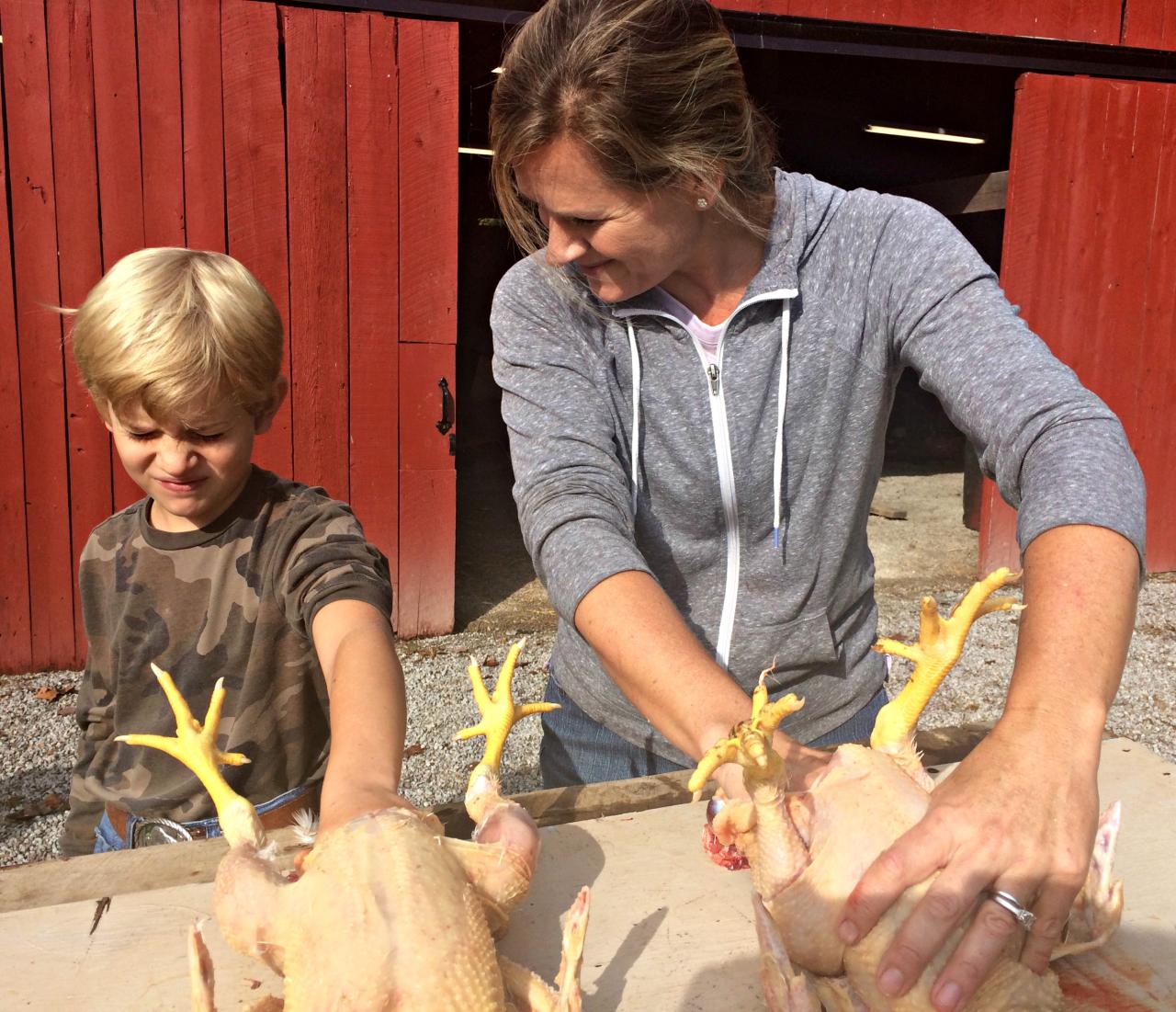
Mastering the art of chicken disassembly is crucial for efficient preparation and maximizing yield. Proper technique ensures minimal waste and allows for the precise portioning needed for various culinary applications. A methodical approach, as Artikeld below, will guide you through the process, from initial separation to final component extraction.
Thorough disassembly is a critical step in the process, maximizing the usable parts of the chicken and minimizing waste. Careful attention to each step will ensure that the process is executed efficiently and safely.
Head and Feet Removal
Careful removal of the head and feet is the initial step in the disassembly process. This process requires minimal effort and time, while ensuring that no injury occurs to the butcher. It sets the stage for further dismemberment.
- Locate the joint connecting the head to the neck. Using a sharp knife, carefully sever the joint. Ensure a firm grip on the neck to prevent accidental injury.
- Next, remove the feet by locating the joint connecting the feet to the body. Using a sharp knife, carefully sever the joint. Discard the feet separately.
Leg and Wing Separation
Separating the legs and wings from the body allows for individual portioning and further processing. This step maximizes the usable parts of the chicken and allows for easier preparation of various dishes.
- Locate the joint connecting the leg to the body. Using a sharp knife, carefully sever the joint, ensuring the knife blade is positioned correctly to avoid tearing the flesh.
- Repeat the process for the other leg. Use a similar technique to separate the wings from the body.
Breast and Thigh Removal
Removing the breast and thigh meat is a crucial step in the process, allowing for individual portioning and further processing. These steps should be performed with precision and care to ensure that the meat is not damaged during the process.
- Locate the joint connecting the breast to the body. Using a sharp knife, carefully sever the joint. Separate the breast meat from the body.
- Repeat the process for the other breast. Employ a similar technique to remove the thighs.
Backbone Removal
Removing the backbone is a necessary step in the process. This is important for proper portioning of the chicken and maximizing the usable parts of the bird.
- Locate the backbone running along the center of the chicken. Using a sharp knife, carefully make incisions along the backbone, starting from the tail end.
- Using your fingers, carefully separate the meat from the backbone, working your way from the tail end to the neck.
Disassembly Steps Summary Table
| Step | Description | Image |
|---|---|---|
| Head and Feet Removal | Sever the joint connecting the head and feet to the body. | (Imagine an image showing a chicken with the head and feet cut off) |
| Leg Separation | Sever the joint connecting the legs to the body. | (Imagine an image showing a chicken with the legs separated) |
| Wing Separation | Sever the joint connecting the wings to the body. | (Imagine an image showing a chicken with the wings separated) |
| Breast Removal | Sever the joint connecting the breast to the body. | (Imagine an image showing a chicken with the breast removed) |
| Thigh Removal | Sever the joint connecting the thigh to the body. | (Imagine an image showing a chicken with the thighs removed) |
| Backbone Removal | Carefully separate the meat from the backbone. | (Imagine an image showing a chicken with the backbone removed) |
Post-Disassembly Procedures
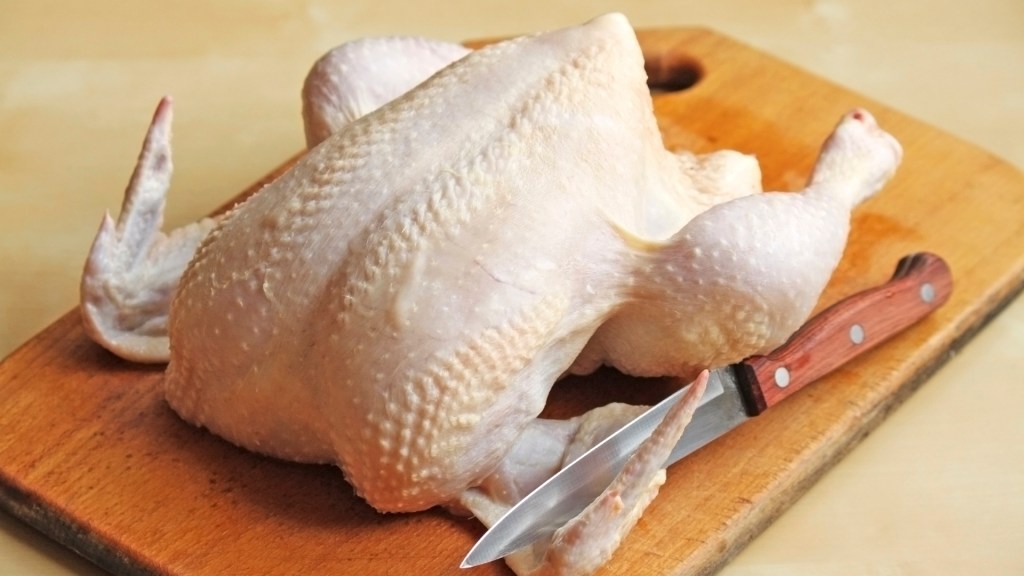
Completing the chicken butchering process involves more than just separating the pieces. Proper sanitation, storage, and preservation methods are crucial for maintaining food safety and maximizing the usability of the meat. This section details the essential steps following disassembly.
Effective cleaning and sanitation of the butchering area is paramount to prevent cross-contamination and maintain food safety standards. A thorough cleanup process not only eliminates potential hazards but also ensures that the next steps in the preparation process are performed in a hygienic environment.
Cleaning and Sanitizing the Butchering Area
Thorough cleaning and sanitizing of the butchering area is essential to prevent bacterial growth and cross-contamination. Use hot, soapy water to remove all visible debris, including blood and tissue. Rinse thoroughly and then apply a commercial sanitizer solution following the manufacturer’s instructions. Allow the surface to air dry completely before proceeding. Discard any contaminated cloths or tools immediately in a designated waste container. This meticulous cleaning process ensures a safe and hygienic environment for further handling and processing.
Storing Butchered Chicken Parts
Different storage methods are necessary for maintaining the quality and safety of various chicken parts. The storage method should consider the intended use and the duration of storage.
- Refrigerated Storage: Store fresh chicken parts in airtight containers or sealed bags in the refrigerator. Separate raw chicken from other foods to avoid cross-contamination. Properly labelled containers will help with organization and prevent confusion. Raw chicken should be stored at or below 40°F (4°C) to inhibit bacterial growth. This is a fundamental step to maintaining the quality of the meat for a certain timeframe.
- Freezing Storage: For longer-term storage, properly packaged chicken parts can be frozen. Vacuum sealing or using airtight containers prevents freezer burn and maintains freshness. Freezing at a consistent temperature ensures the meat quality remains intact, and proper labelling will allow easy identification. Freeze the chicken as soon as possible after butchering to preserve quality.
Packaging for Long-Term Storage
Proper packaging is critical for maintaining the quality and safety of stored chicken parts, especially during extended periods. Use airtight containers or freezer bags to prevent freezer burn and moisture loss. Label each package with the date, type of chicken part, and any other relevant information. Freezing is a crucial step in long-term storage, especially for chicken parts intended to be stored for more than a few days.
Preserving the Chicken Meat
Several preservation methods extend the shelf life and enhance the flavor of butchered chicken. These methods can involve various processes and have specific guidelines to follow.
- Vacuum Sealing: Vacuum sealing removes air from packaging, slowing down oxidation and bacterial growth. This method helps maintain the freshness and moisture of the meat for a longer period, making it ideal for long-term storage. This method is suitable for both refrigerated and frozen storage, and the sealing process must be conducted correctly to prevent contamination and moisture loss.
- Curing: Curing involves adding salt, sugar, or other preservatives to the meat. This method helps preserve the chicken and add a unique flavour profile. This process requires careful attention to the correct ratios of ingredients and the appropriate curing time. Cured chicken can be enjoyed in various dishes, such as salads or as a snack.
- Smoking: Smoking imparts a unique smoky flavour and enhances the preservation of the chicken. The process can be adapted for different cooking methods and the temperature should be maintained at an appropriate level.
Cooking the Different Parts
The best cooking method for each chicken part depends on the desired texture and flavor. Each part of the butchered chicken lends itself to different cooking techniques, leading to various culinary experiences.
| Chicken Part | Cooking Method | Description |
|---|---|---|
| Breast | Pan-frying, grilling, baking | Tender and lean, ideal for various cooking methods. |
| Legs | Braising, roasting | Moist and flavorful, perfect for slow-cooking methods. |
| Thighs | Roasting, grilling | Juicy and flavorful, ideal for both fast and slow-cooking techniques. |
| Wings | Frying, baking, grilling | Crispy and flavorful, excellent for appetizers or main dishes. |
Safety and Hygiene Practices
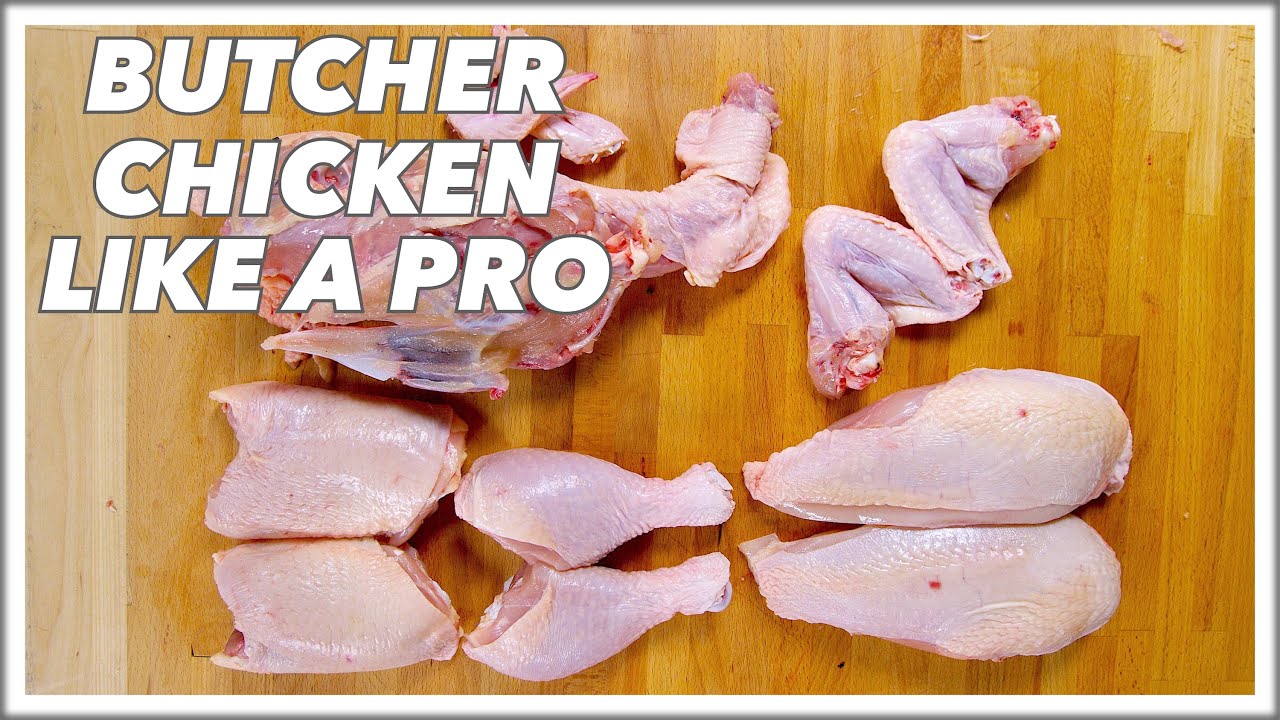
Safe and hygienic practices are paramount during chicken butchering to prevent contamination and ensure food safety. Adhering to these guidelines minimizes the risk of foodborne illnesses and maintains the quality of the final product. Maintaining a clean and organized workspace is critical throughout the entire process.
Importance of Protective Gear
Appropriate protective gear is essential for safeguarding against potential hazards during chicken butchering. This includes wearing gloves, a mask, and eye protection. Gloves prevent direct skin contact with raw chicken, which can transmit pathogens. Masks help prevent the inhalation of airborne particles and droplets that might contain bacteria or viruses. Eye protection safeguards against splashes of bodily fluids or debris, ensuring the safety of your eyes. These measures are vital in protecting your health and preventing cross-contamination.
Proper Hand Washing and Sanitation
Thorough hand washing is a fundamental practice in maintaining hygiene. Wash hands thoroughly with soap and water before and after handling raw chicken, and after each task involving the raw product. Sanitize all surfaces and tools regularly with appropriate disinfectants. This rigorous sanitation process ensures a clean and safe environment, limiting the spread of pathogens.
Preventing Contamination
Prevent contamination by ensuring proper separation of raw and cooked chicken. Use separate cutting boards and utensils for raw chicken to avoid cross-contamination with other foods. Maintain a clean workspace by wiping down surfaces frequently with disinfectant solutions. These practices are critical to maintaining a safe and hygienic environment, protecting the health of yourself and the consumers of the finished product.
Safe Disposal of Waste Materials
Proper disposal of waste materials is crucial for preventing the spread of pathogens and maintaining a clean environment. Dispose of raw chicken scraps, blood, and feathers in sealed, labeled containers. Follow local regulations for proper waste disposal. Ensure that waste materials are disposed of appropriately to prevent attracting pests and to comply with local regulations.
Potential Hazards and Prevention Measures
| Potential Hazard | Prevention Measure |
|---|---|
| Bacterial contamination (e.g., Salmonella, Campylobacter) | Thorough handwashing, proper separation of raw and cooked chicken, sanitizing tools and surfaces, maintaining a clean workspace. |
| Sharp knives and tools | Proper knife handling techniques, sharp knives are maintained regularly to prevent accidents, ensuring knives are stored securely. |
| Slips, trips, and falls | A clean and organized workspace, proper footwear, avoiding distractions. |
| Splashes of bodily fluids | Wearing appropriate eye protection, gloves, and a mask during the process. |
| Exposure to raw chicken particles | Using appropriate ventilation, ensuring proper handling of the raw chicken. |
Different Cuts and Uses
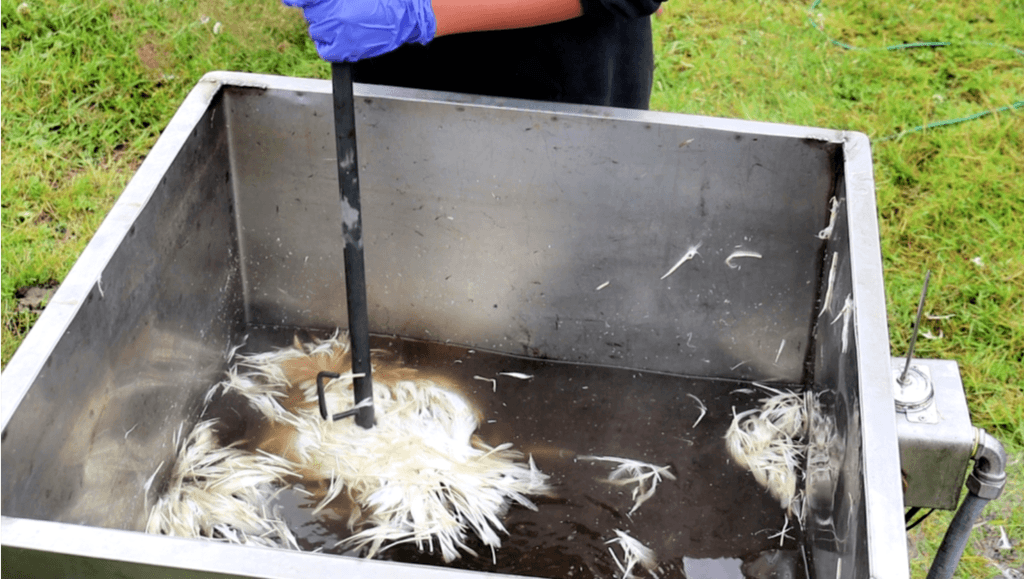
Understanding the various cuts of chicken and their culinary applications is crucial for maximizing yield and creating delicious dishes. This section details the different parts of a chicken, their optimal uses, and some recipe ideas. Different cultures have unique approaches to butchering and utilizing the whole bird, showcasing the versatility of this common protein source.
Chicken, a versatile protein, offers a wide range of cuts, each with its own texture and flavor profile. Knowing how to best utilize these cuts ensures optimal flavor and cooking results. The following sections will Artikel the ideal applications for each part, from simple to elaborate recipes.
Breast Cuts
Chicken breast meat is prized for its lean texture and mild flavor. It’s a popular choice for grilling, pan-frying, and baking. It’s often used in stir-fries, salads, and sandwiches. The tender, easily digestible nature of the breast makes it suitable for a wide array of recipes. A common recipe involves pan-searing chicken breast with herbs and lemon for a simple yet flavorful dish.
Thigh Cuts
Chicken thighs are known for their rich, succulent texture and robust flavor. Their higher fat content results in a more tender and flavorful meat, making them ideal for roasting, braising, and slow cooking. They are also a good choice for curries and stews. Chicken thighs often absorb flavors from marinades and sauces well, resulting in deeply seasoned dishes. A popular recipe involves slow-roasted chicken thighs with garlic and herbs, creating a melt-in-your-mouth experience.
Wing Cuts
Chicken wings are popular for their crispy texture and savory flavor. They are frequently fried, baked, or grilled. The small size makes them perfect for appetizers or snacks. They are commonly marinated in a variety of spicy or sweet sauces. A popular dish is buffalo wings, which are breaded and deep-fried before being tossed in a spicy sauce.
Leg Cuts
Chicken legs, like thighs, are rich in flavor and have a more substantial texture. They are a good choice for roasting, grilling, or braising. Their larger size makes them suitable for serving as a main course. They are often used in stews or casseroles, absorbing the flavors of the surrounding ingredients. A recipe idea involves braising chicken legs in red wine and herbs for a hearty and flavorful meal.
Other Cuts and Variations
- Giblets: Chicken giblets (heart, liver, and gizzard) are a source of rich flavor and nutrients. They are often used in soups, stews, and sauces. These parts of the bird add depth and complexity to dishes.
- Skin: The skin of the chicken, while sometimes discarded, can be used in a variety of ways. It is often rendered down to make chicken fat, which is used as a cooking medium or flavor enhancer in various dishes. Crispy fried chicken often showcases the flavor and texture of the skin.
Cultural Variations, How to butcher a chicken
Different cultures have unique methods for butchering and preparing chicken. In some cultures, the whole chicken is cooked and served, while in others, specific parts are emphasized. For example, in some Asian cuisines, chicken feet are a popular delicacy. This variety in culinary traditions reflects the diverse palates and cultural preferences around the world.
Cooking Method Comparison Table
| Cooking Method | Best Cuts | Description |
|---|---|---|
| Roasting | Thighs, Legs | The higher fat content in these cuts results in moist and flavorful roasted chicken. |
| Frying | Wings, Breast | Frying allows for crispy skin and tender meat, especially suitable for wings and breasts. |
| Braising | Legs, Thighs, Breast | Braising creates a tender and flavorful dish, ideal for tougher cuts like legs and thighs. |
| Grilling | Wings, Breast | Grilling provides a smoky flavor and a slightly charred exterior, ideal for wings and breasts. |
Advanced Techniques (Optional): How To Butcher A Chicken
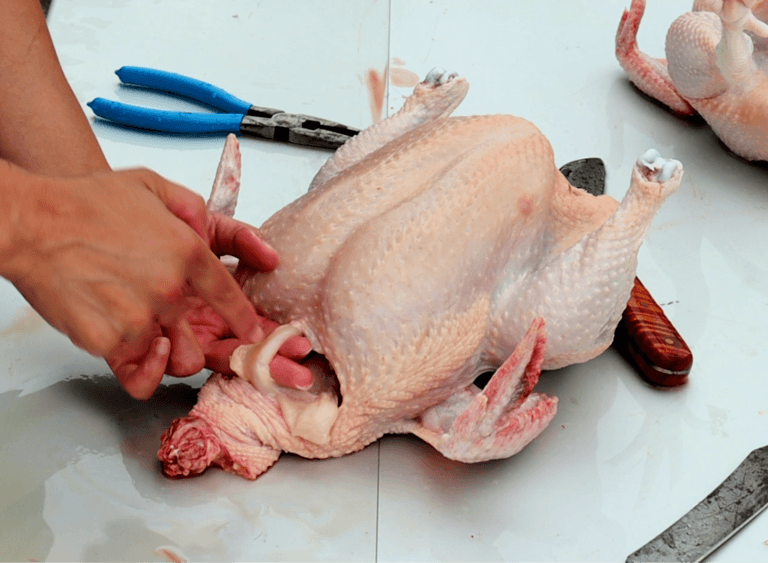
Beyond the fundamental techniques of chicken butchering, several advanced methods can elevate your preparation and culinary outcomes. These optional techniques allow for specialized cuts and enhanced flavor extraction, opening doors to a wider range of dishes and culinary creations.
Understanding these advanced methods allows you to tailor the preparation of chicken to specific recipes, resulting in a more precise and effective outcome. These methods can be particularly useful for achieving specific textures and flavors, depending on the dish.
Skin Removal Techniques
Proper skin removal enhances the presentation and texture of certain dishes. A clean and precise technique is essential for optimal results. Using a sharp knife and a gentle sawing motion along the breast and thigh bones, carefully lift the skin from the underlying meat. Avoid tearing the skin, as this can affect the final appearance.
Preparing for Specific Culinary Needs
Chicken can be prepared in numerous ways, from bone-in roasts to boneless, skinless pieces for stir-fries. Understanding these variations is key to preparing the chicken correctly for the intended recipe. Bone-in chicken often provides a richer flavor and more tender meat, while boneless, skinless cuts are ideal for dishes where texture and appearance are paramount. The choice often depends on the desired outcome for the finished dish.
Bone-In vs. Boneless Preparation
The decision between bone-in and boneless chicken depends largely on the recipe. Bone-in chicken retains moisture and flavor, often resulting in a more tender final product. Boneless chicken, on the other hand, allows for easier manipulation in dishes like stir-fries and salads.
Recipes Requiring Specific Cuts
Many recipes call for specific chicken cuts, each with its unique properties. For instance, a classic chicken pot pie might require bone-in chicken thighs for a rich, flavorful filling. Conversely, a chicken salad often uses boneless, skinless breast meat for a lighter, more manageable texture. Understanding the appropriate cuts will help to optimize the flavor and texture of the finished dish.
Chicken Stock Preparation
Chicken bones, often discarded after butchering, are a valuable resource for creating flavorful stock. Soaking the bones overnight helps to extract impurities and enhance the stock’s richness. Simmering the bones in water with aromatics like onions, carrots, and celery, for an extended period, creates a complex and savory stock.
“A good stock is the foundation of many dishes, from soups to sauces.”
Cooking Methods for Different Chicken Parts
| Chicken Part | Cooking Method | Advantages | Disadvantages |
|---|---|---|---|
| Breast | Pan-frying, grilling, baking | Quick cooking time, versatile | Can dry out easily if overcooked |
| Thighs | Braising, roasting, baking | Moist and flavorful, good for stews | Can take longer to cook |
| Drumsticks | Roasting, frying | Tender and juicy | Can become dry if overcooked |
| Wings | Baking, frying, grilling | Crispy skin, flavorful | Can become tough if overcooked |
Questions Often Asked
How to butcher a chicken – What are the essential safety precautions when butchering a chicken?
Always wear appropriate protective gear, such as gloves and a cutting apron. Thoroughly wash your hands before and after handling the chicken. Ensure your workspace is clean and sanitized to prevent contamination.
How do I thaw a frozen chicken safely?
The safest method is thawing the chicken in the refrigerator. Avoid thawing at room temperature, as this can lead to bacterial growth. Plan accordingly to allow adequate thawing time.
What are some common mistakes to avoid when separating the chicken?
Rushing the process and not using the proper techniques can lead to damaging the meat. Ensure you are using the right tools for the job and take your time to avoid mistakes.